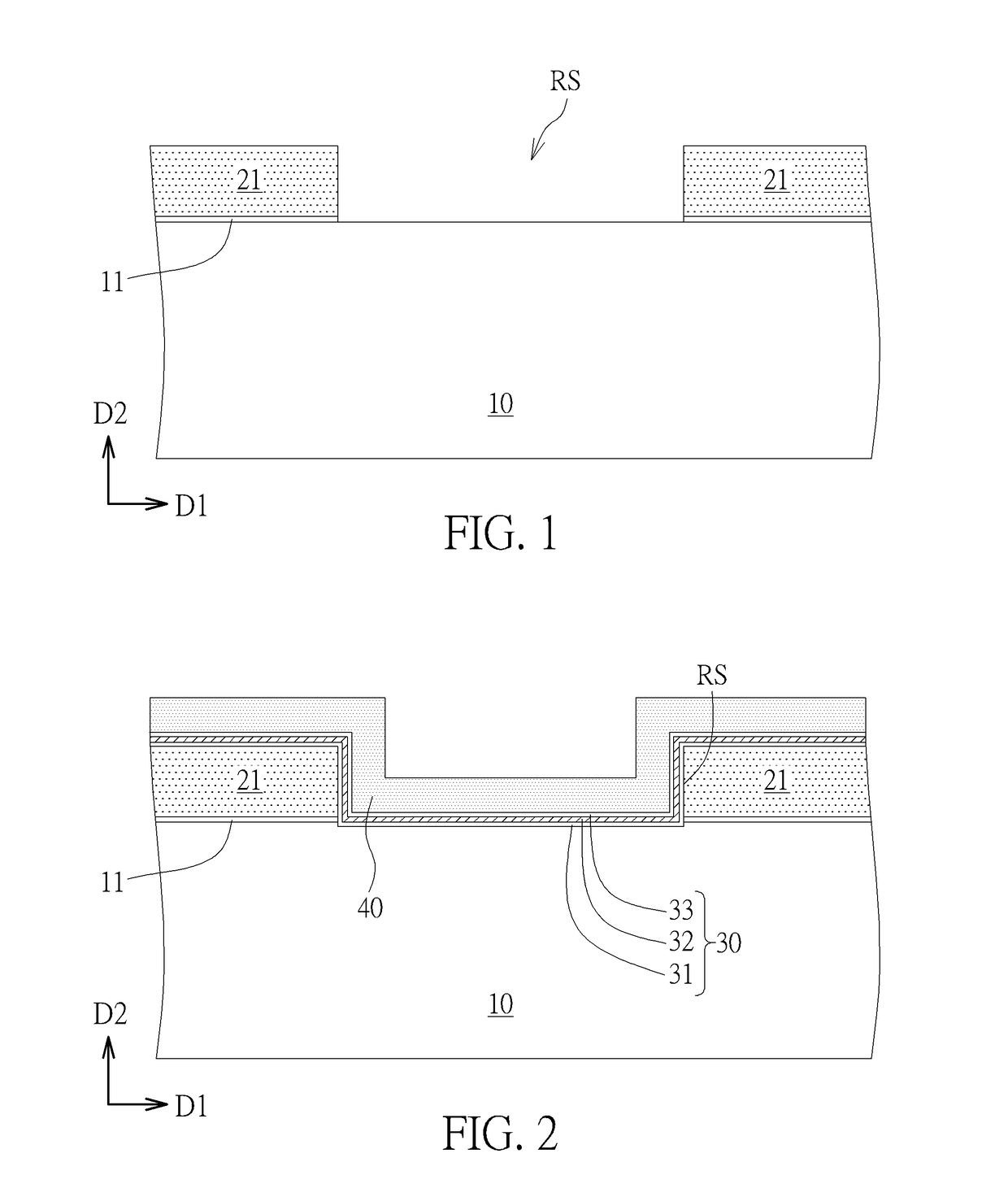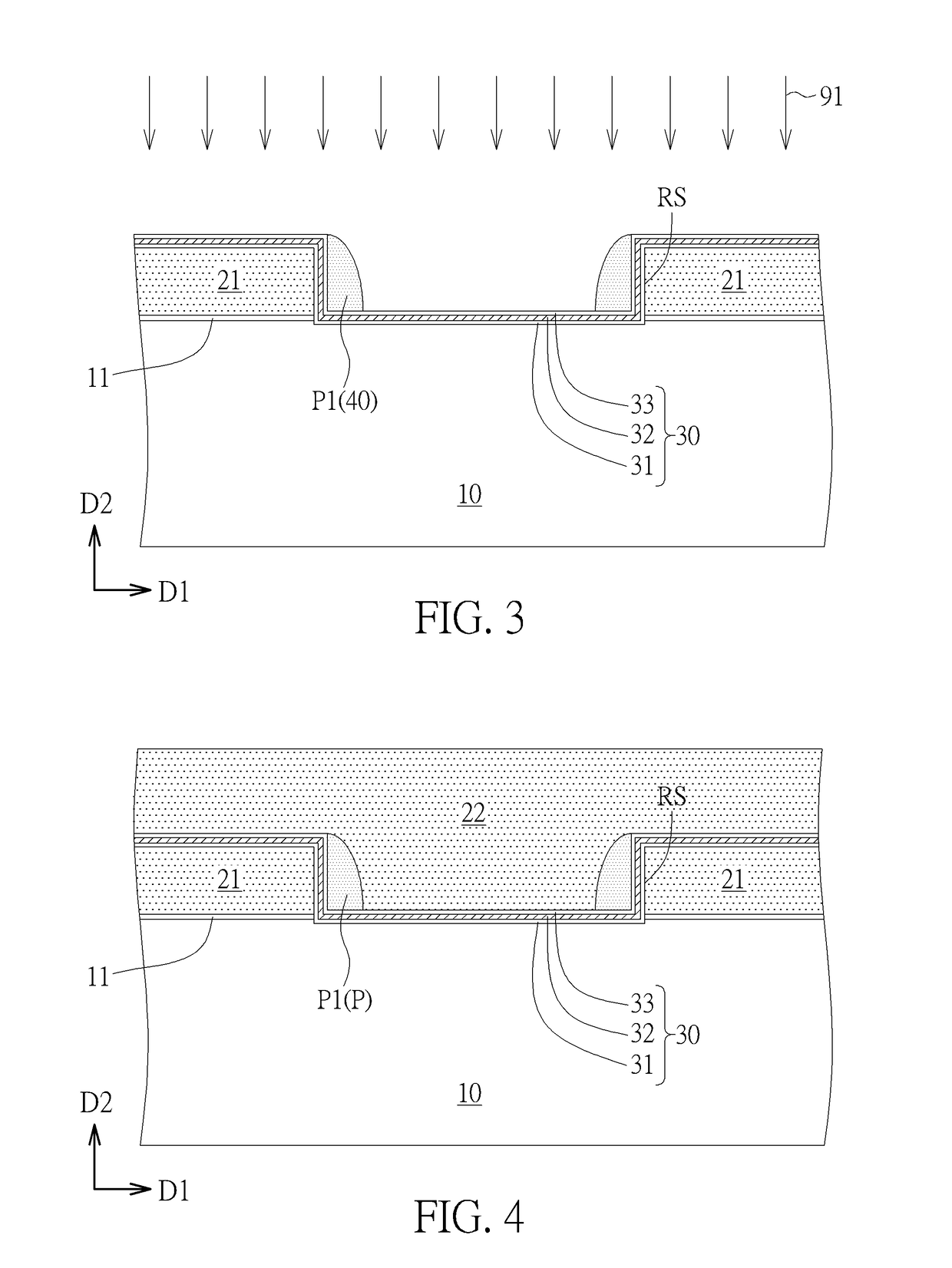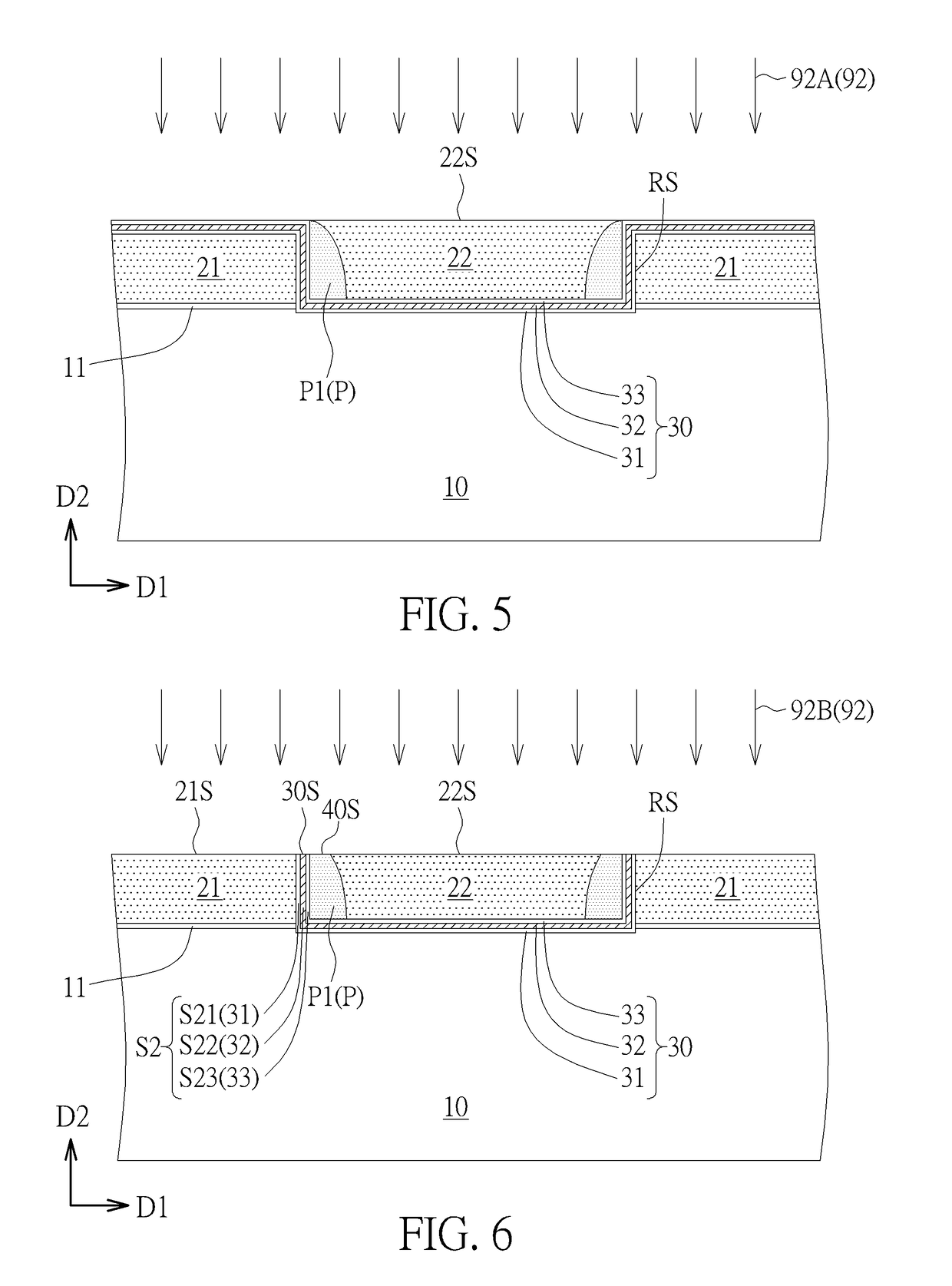Non-volatile memory device with reduced distance between control gate electrode and selecting gate electrode and manufacturing method thereof
a non-volatile memory and gate electrode technology, applied in the field of memory devices, can solve problems such as the complexity of the fabrication process of memory structures, and achieve the effects of reducing the distance between the control gate electrode and the selecting gate electrode, and enhancing the density of memory cells in the non-volatile memory devi
- Summary
- Abstract
- Description
- Claims
- Application Information
AI Technical Summary
Benefits of technology
Problems solved by technology
Method used
Image
Examples
first embodiment
[0023]Please refer to FIGS. 1-8. FIGS. 1-8 are schematic drawings illustrating a manufacturing method of a non-volatile memory device according to the present invention. As shown in FIG. 8, the manufacturing method in this embodiment may include the following steps. A control gate electrode 22G is formed on a semiconductor substrate 10. A first oxide-nitride-oxide (ONO) structure S1 is formed between the control gate electrode 22G and the semiconductor substrate 10. A selecting gate electrode 21G is formed on the semiconductor substrate 10. A second ONO structure S2 and a spacer structure P are formed between the control gate electrode 22G and the selecting gate electrode 21G in a first direction D1. A distance DS between the control gate electrode 22G and the selecting gate electrode 21G in the first direction D1 is smaller than or equal to a sum of a width of the second ONO structure S2 (such as a first width W1 shown in FIG. 8) and a width of the spacer structure P (such as a sec...
second embodiment
[0036]Please refer to FIG. 3 and FIGS. 9-12. FIGS. 9-12 are schematic drawings illustrating a manufacturing method of a non-volatile memory device 102 according to the present invention, and FIG. 9 may be regarded as a schematic drawing in a step subsequent to FIG. 3. As shown in FIG. 3 and FIG. 9, in the manufacturing method of this embodiment, a removing process 93 may be performed to remove the second oxide layer 33 of the oxide-nitride-oxide stack layer 30 formed in the recess RS and exposed by the insulation layer 40 after the etching process 91 of forming the first spacer P1 and before the step of forming the second gate material layer (not shown in FIG. 3 and FIG. 9). In other words, a part of the second oxide layer 33 is not covered by the first spacer P1 after the etching process 91, and the second oxide layer 33 which is not covered by the first spacer P1 may be removed by the removing process 93. The removing process 93 may include an oxide pre-clean process or other appr...
PUM
 Login to View More
Login to View More Abstract
Description
Claims
Application Information
 Login to View More
Login to View More - R&D
- Intellectual Property
- Life Sciences
- Materials
- Tech Scout
- Unparalleled Data Quality
- Higher Quality Content
- 60% Fewer Hallucinations
Browse by: Latest US Patents, China's latest patents, Technical Efficacy Thesaurus, Application Domain, Technology Topic, Popular Technical Reports.
© 2025 PatSnap. All rights reserved.Legal|Privacy policy|Modern Slavery Act Transparency Statement|Sitemap|About US| Contact US: help@patsnap.com



